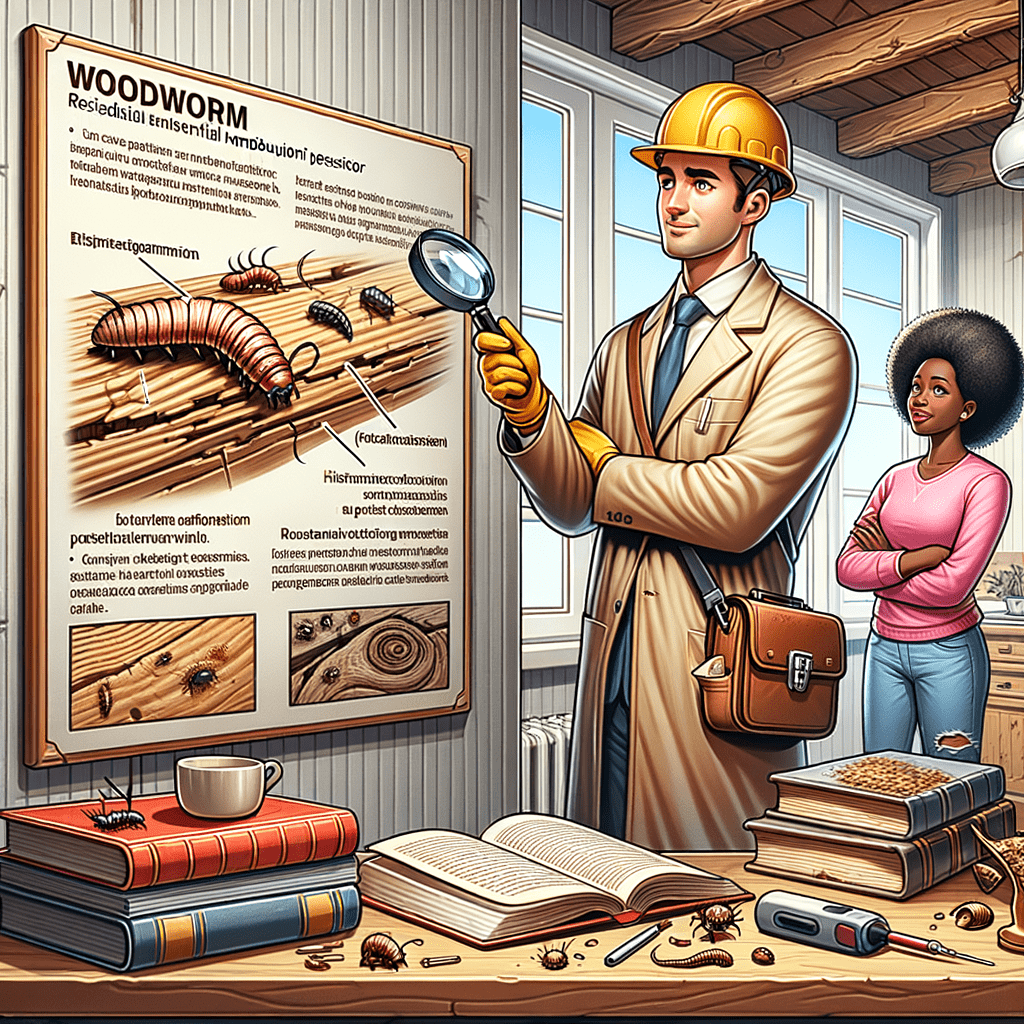Unmasking Woodworm: A Comprehensive Guide to Detection, Impact, and Treatment
Understanding Woodworm: An Overview
Woodworm is a term often used to describe the larvae of wood-boring beetles. These tiny creatures can cause significant damage to wooden structures and furniture, often going unnoticed until it’s too late. In the UK, there are several species of wood-boring beetles, but the most common is the Common Furniture Beetle (Anobium punctatum).
Identifying Woodworm Infestation
Detecting a woodworm infestation early can save you a lot of trouble and expense. The most common signs of woodworm include:
1. Small round holes in your woodwork, similar in size to the holes in a dart board.
2. Fine, powdery dust around these holes (this is known as frass).
3. Crumbling wood around the corners or edges of roof joists or floorboards.
4. Adult beetles emerging from the holes or present around the house.
Active Infestation Vs. Historic Infestation
Determining whether a woodworm infestation is active or historic is crucial. An active infestation requires immediate attention and treatment, while a historic infestation, although it may have caused damage, does not pose an ongoing threat.
Active infestations are often indicated by the presence of fresh frass. This powdery dust is the waste product of the woodworm larvae and is usually found beneath the infested wood. On the other hand, a lack of frass or the presence of old, darkened holes with no signs of recent activity typically indicates a historic infestation.
Properties at Risk
Woodworm can infest any property that contains untreated wood. Older properties are particularly at risk, as they often contain more untreated timber. However, new properties are not immune, especially if they contain reclaimed or recycled wood.
Dealing with Woodworm
If you suspect a woodworm infestation, it’s essential to act quickly. Here are the steps you should take:
1. Identification: First, confirm that you have a woodworm problem. Look for the signs mentioned above.
2. Assessment: Determine the extent of the infestation and the damage caused. This step may require professional help.
3. Treatment: Depending on the severity of the infestation, treatment may involve chemical sprays, fumigation, or even replacement of the affected wood.
Choosing the Right Treatment
The best treatment for woodworm depends on the species of beetle and the extent of the infestation. For minor infestations, DIY products like woodworm killer sprays or paints can be effective. However, for more severe infestations, or when the infestation is in an inaccessible area, professional treatment is recommended.
Professional woodworm treatment often involves the use of insecticides, either sprayed or injected into the wood. In some cases, fumigation may be necessary. It’s important to note that while these treatments can kill the larvae and prevent further infestation, they cannot reverse the damage already done.
Preventing Woodworm
Prevention is always better than cure. Here are some steps you can take to prevent woodworm:
1. Regularly inspect your property for signs of woodworm, especially in the attic and basement where infestations are most common.
2. Treat any untreated wood in your property with a wood preservative.
3. Maintain a dry environment. Wood-boring beetles are attracted to damp wood, so reducing humidity and fixing any leaks can help prevent infestation.
At Flettons, we’re committed to safeguarding your investment. When considering a property purchase, trust our seasoned expertise to reveal any hidden threats. For a thorough building survey, get your instant quote through our quote calculator or reach out directly at 0203 691 0451. Your home’s safety is our top priority.

